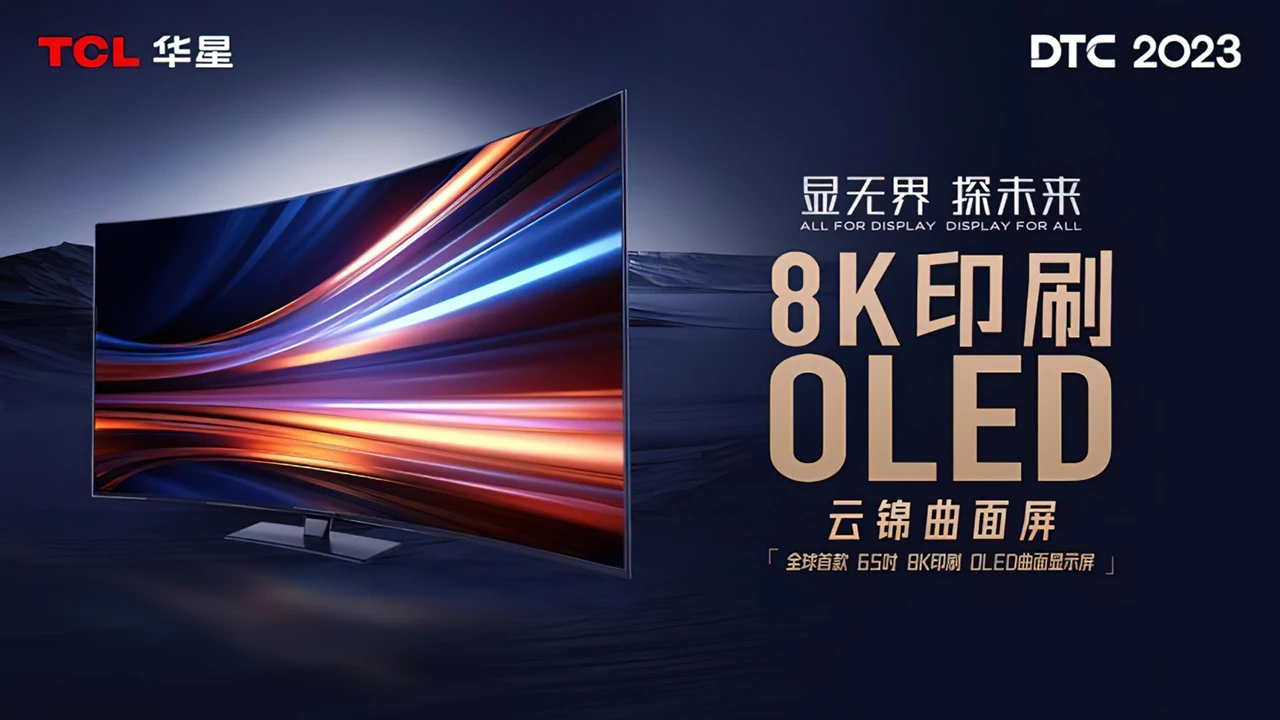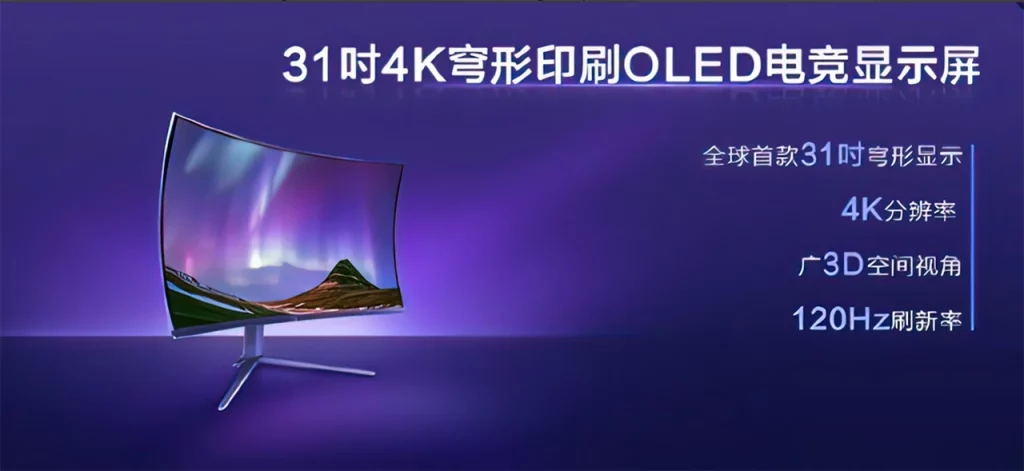
TCL introduces curved 8K OLED monitors for PCs with innovative inkjet panel technology
At a recent screen technology conference in China, TCL has attracted attention by presenting a series of monitors of the latest generation that will appear on the market in 2024. It is among the most significant news the use of inkjet technology for printing OLED screensrevolutionary alternatives to the dominant LG and Samsung OLED panels common in gaming monitors.
Two standout models featuring TCL's inkjet OLED technology include a 31-inch 4K monitor with 120Hz and an unusual convex panel, as well as a more conventional 65-inch curved monitor with full 8K resolution and 120Hz refresh.
The 31-inch model, with its convex design, provides a spatial 3D experience without glasses. However, the real innovation lies in the fact that it is a high-refresh 4K OLED screen that is not based on Samsung or LG panel technology.
New TCL monitors require Display Port 2.0
The 65-inch monitor, with its 8K resolution, provides a pixel density comparable to a standard 32-inch 4K monitor, making larger screens more practical for PC users.
However, the increased number of pixels requires significant bandwidth, which requires a GPU with DisplayPort 2.0 support. Right now, just AMD's Radeon RX 7000 series supports this interface, leaving Nvidia's RTX 4090 unable to meet the requirements.
 TCL
TCLAlthough the 65-inch monitor is slated for release next year, it coincides with the potential launch of the next generation of Nvidia GPUs, which are likely to support DP 2.0. PC Gamer. However, the emphasis is on TCL's revolutionary inkjet technology for printing OLED panels, which represents a significant shift from existing LG and Samsung OLED technology.
TCL has invested a significant $6.8 billion in a new inkjet OLED panel factory, originally planned for production in 2023, but now pushed back to next year. The key advantage of inkjet OLED panel printing technology lies in its cost-effective approach compared to conventional OLED panels, using the Fine Metal Mask (FMM) process. This technology also makes it easier to achieve a higher pixel density on PC monitors compared to HDTVs.
Details about full-screen lighting and exact pricing are still scarce, but the possibility of competing with existing OLED technologies adds that intriguing element to the monitor market. The 57-inch dual-4K monitor by TCL, with an impressive 11,000 dimming zones in its mini-LED lighting, further underscores the brand's commitment to pushing the boundaries of display technology.
What kind of response the two South Korean companies will prepare for the Chinese, and whether they will succeed, remains to be seen in the coming months.